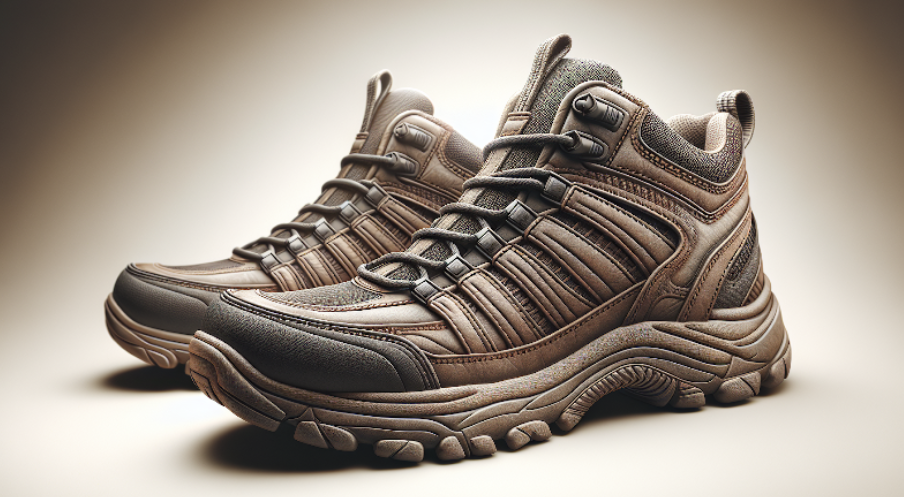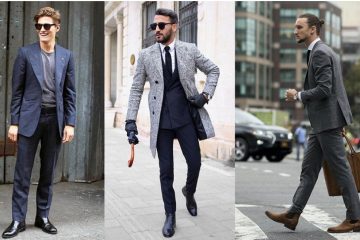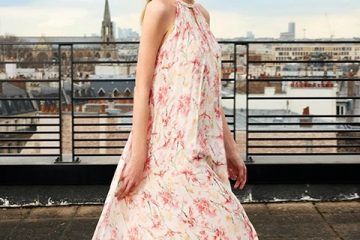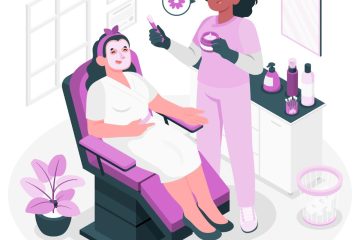Slipping and falling can lead to serious injuries, making non-slip shoes a crucial component of workplace safety for many professionals. These specialized shoes provide stability and peace of mind for workers in slippery environments, effectively reducing the risk of accidents. However, as we grow more conscious of workplace attire, non-slip shoes have evolved to marry function with fashion, ensuring that you don’t have to compromise on style for the sake of safety. In this comprehensive guide, we explore the ins and outs of non-slip shoes, their importance across various professions, and how they’ve moved from being a purely functional item to a fashionable wardrobe essential.
Understanding Non-Slip Shoes
Definition and characteristics
Non-slip shoes, also known as slip-resistant shoes, are designed specifically to prevent slips and falls on slick floors. They typically feature a unique sole with a tread pattern that channels liquids away, creating more traction between the shoe and the surface. These soles are often made from materials that provide a better grip, such as rubber, and are softer and more flexible than the soles of standard footwear to maximize contact with the ground.
How non-slip shoes work
The effectiveness of non-slip shoes lies in the tread pattern, sole material, and overall design. The right combination of these elements ensures that a larger sole area contacts the floor, and the channels in the tread allow liquids to be dispersed, reducing the potential for hydroplaning. This feature is crucial for maintaining solid footing, much like the tires on a car, which rely on tread to maintain traction in wet conditions.
The science behind the slip-resistant soles
Slip resistance is more than just clever marketing—it’s a matter of physics. The tread design and sole material work together to increase the coefficient of friction. This can be measured scientifically through standardized tests, which compare the level of slippage across various surfaces and conditions. Manufacturers invest considerable research and development to ensure their non-slip shoe soles meet stringent safety standards.
The Need for Non-Slip Shoes in Various Professions
Healthcare workers
In the fast-paced environment of hospitals and clinics, healthcare workers face the constant hazard of liquids on floors. From water to various medical solutions, these potential slip hazards make non-slip shoes indispensable for nurses, doctors, and support staff to perform their duties safely and efficiently.
Restaurant and hospitality industry employees
The restaurant and hospitality industry is notorious for spills and slick surfaces, with kitchen staff, servers, and bartenders all requiring reliable footwear to maneuver safely. Non-slip shoes are not just a personal preference in this field; they are often mandated by employers to meet safety regulations and protect employees and patrons alike.
Industrial and construction workers
In industrial and construction settings, the presence of oil, chemicals, and other slippery substances, combined with the rough nature of the work, necessitates the use of non-slip shoes. These shoes not only prevent slips but are also often designed with additional safety features such as steel toes to protect against other workplace hazards.
Other professions that benefit from non-slip shoes
Beyond these typical environments, many other professions can benefit from the added security of non-slip shoes, including retail workers, cleaners, and even performers on slick stages. Essentially, any job that involves a risk of slipping on wet or oily surfaces could be made safer with the right footwear.
The Evolution of Non-Slip Shoe Styles
From purely functional to modern and stylish
Non-slip shoes have undergone a significant transformation over the years. Initially regarded as purely functional and often lacking in style, modern advancements have led to designs that are both effective and fashionable. This evolution means that workers don’t need to choose between safety and style; they can confidently wear their non-slip shoes in and out of the workplace.
Design integration: How style is incorporated into safety footwear
Today’s market features non-slip shoes that vary from classic clogs and practical lace-ups to trendy sneakers and even chic flats. Designers have integrated fashion-forward elements, like various colors, patterns, and finishes, into non-slip shoes, allowing them to complement professional uniforms or personal style preferences seamlessly.
Key Features to Look for in Non-Slip Shoes
Sole material and design
When selecting non-slip shoes, the sole is the most critical factor. Look for soles made of high-grade rubber with a pronounced tread pattern. These materials and designs are specifically engineered to enhance grip and stability on slippery surfaces.
Comfort features such as insoles and cushioning
Comfort is another crucial aspect, especially for those who spend long hours on their feet. Look for non-slip shoes with supportive insoles, ample cushioning, and ergonomic design to ensure all-day comfort and reduce foot fatigue.
Durability and construction quality
Non-slip shoes should be durable enough to withstand the rigorous conditions of your work environment. High-quality construction, reinforced stitching, and premium materials are indicators of footwear that will stand the test of time and maintain their slip-resistant properties.
Stylish elements for a fashionable appearance
Despite their practical purpose, non-slip shoes can still be stylish. Look for designs with modern aesthetics, such as sleek silhouettes, textured fabrics, or subtle embellishments that make your safety footwear a fashion statement as well.
Top Brands and Models of Non-Slip Shoes
Popular brands known for quality non-slip shoes
Several brands have established their reputations on the quality and reliability of their non-slip shoes. Brands like Skechers, Crocs, and New Balance offer a range of options that cater to different preferences while ensuring safety and comfort.
Reviewing top models for both safety and style
Among the top models, look for those that balance safety features with contemporary designs. Models that offer various colorways, cushioned footbeds, and a streamlined appearance find favor with style-conscious consumers while delivering non-slip functionality.
Cost versus quality analysis
While the price can be indicative of quality, high-cost non-slip shoes do not always guarantee superior performance. It’s essential to compare features, read reviews, and sometimes even test them out to ensure you’re getting the best value for your investment.
Balancing Fashion with Functionality
How to choose shoes that are both safe and attractive
Choosing non-slip shoes that fit your style and safety needs requires consideration of the work environment, comfort, and personal aesthetics. It’s essential to find a pair that meets industry safety standards while reflecting your personality and fashion sense.
Personal experience and testimonials
Hearing from others who have worn non-slip shoes in similar professions can provide valuable insight into how shoes perform in real-life conditions. Testimonials can reveal how shoes hold up over time and whether they’ve successfully combined safety with style.
Advice from fashion and safety experts
Consulting with experts in both fashion and workplace safety can guide you towards making an informed choice. These professionals can suggest options that align with the latest trends and meet all the necessary safety requirements.
Maintenance and Care for Non-Slip Shoes
Cleaning and preserving the non-slip sole
Proper maintenance is critical to maintaining the effectiveness of non-slip soles. Regular cleaning with appropriate products can keep the tread clear of debris that might interfere with traction. Moreover, avoid using harsh chemicals that can degrade the sole material and its slip-resistant properties.
Tips for extending the life of non-slip shoes
To prolong the life of non-slip shoes, alternate between pairs to let them air out, use shoe protectors in inclement weather, and replace the insoles when necessary. Keeping an eye on the tread and exterior will also alert you to any wear that could compromise their slip-resistance.
When to replace your non-slip shoes
Knowing when to replace non-slip shoes is crucial for safety. Look for worn tread, loss of grip, or discomfort while walking as signs that it’s time for a new pair. This not only ensures continuous protection but also prevents potential foot problems associated with worn-out footwear.
Potential Pitfalls to Avoid When Buying Non-Slip Shoes
Common mistakes during purchase
One common mistake is buying non-slip shoes based on looks alone without considering their performance. It’s essential to prioritize slip resistance and fit over style, ensuring that the shoes can perform well in the workplace.
Signs of a non-functional non-slip shoe
A lack of certification or confusing labeling can be a sign of non-functional non-slip shoes. Reliable manufacturers usually provide clear information about the slip resistance of their products. Be wary of shoes that make broad claims without detailed descriptions of their slip-resistant features.
Navigating misleading marketing claims
With a myriad of options in the market, it’s important to be able to distinguish genuine non-slip shoes from those with false claims. Researching, reading verified reviews, and sticking to reputable brands can help you avoid falling prey to inaccurate marketing.
Conclusion
Summarizing the significance of non-slip shoes in safety and fashion
Non-slip shoes are not just a functional requirement; they have become a style statement that compliments professional attire while ensuring safety. The steady evolution of design has resulted in a plethora of options that provide the best of both worlds.
Encouraging informed purchasing decisions
By considering the factors outlined in this article, you can make informed decisions that will keep you safe and stylish on the job. It is crucial to invest in quality non-slip footwear that fits well, offers adequate protection, and suits your personal style.
Looking ahead: Future trends in non-slip footwear technology and design
The future of non-slip footwear looks promising with ongoing technological advancements and design innovation. We can expect to see even more sophisticated materials, improved ergonomic designs, and a broader range of fashionable choices that cater to diverse preferences while upholding the highest safety standards.




